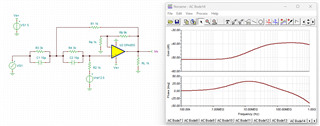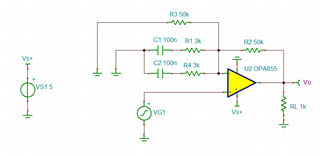Hello,
I want to design an active high pass filter using OPA855 which starts amplifying arounf 45MHz and stops around 100MHz. I tried Sallen-key topology first but I faced some issues, then changed it to a simple High pass. It seems C1 does not play any role in the response! What am I missing?




